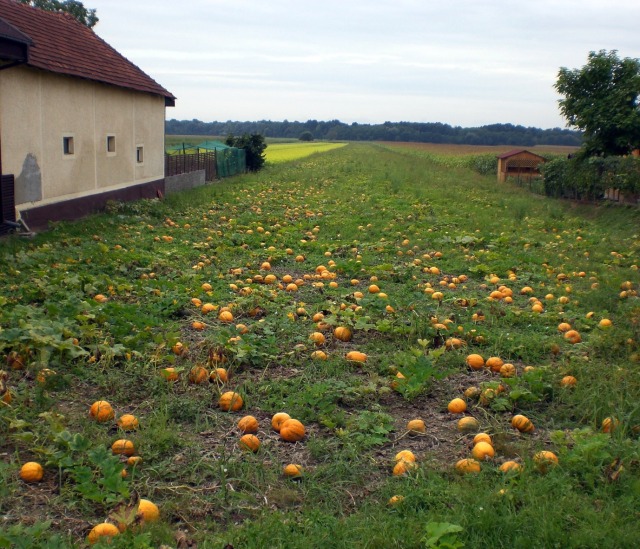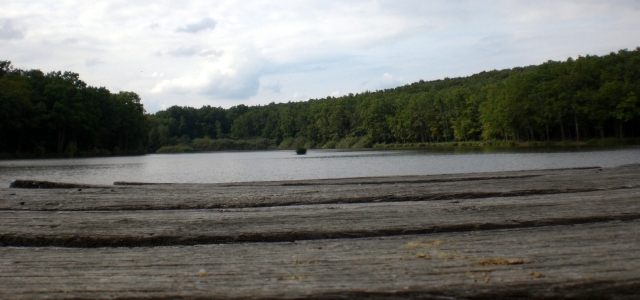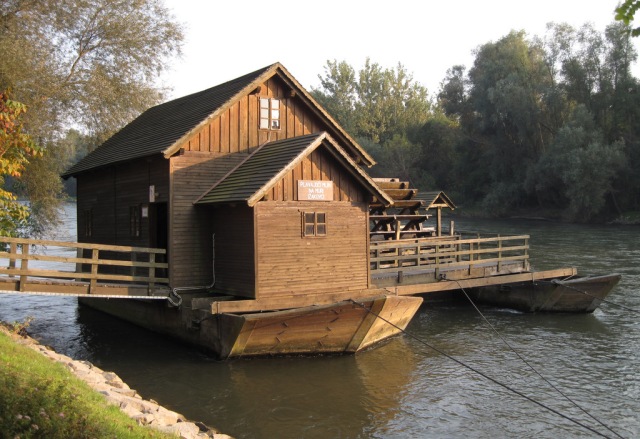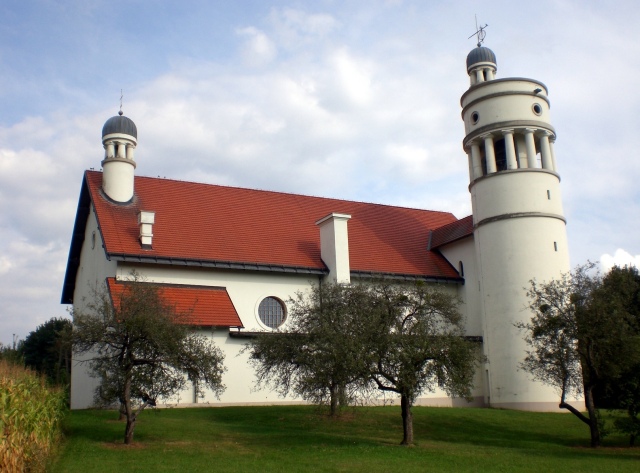Having lived in Slovenia for over 8 years, and being a lover of hiking and all things Alpine, I had yet to visit the northeast of Slovenia. I’d long intended to get there but, in truth, I suppose I always assumed it would be a bit ‘flat and boring’. Well, I stand corrected. Yes, it is flat in places, but there are also rolling hills, vineyards, castles, lakes, numerous spas, delicious food, and more. So here’s a brief run down of my visit which will hopefully whet your appetites too!
The Prekmurje region, part of Slovenia’s Pomurje, is named after the Mura river and is known, among other things, for its many storks which can be seen throughout the area nesting on chimneys tops and in large nests balanced precariously on telegraph poles. The hotel where I stayed even had its own stork family nesting on the roof and a live camera broadcasting on a screen in the restaurant so guests can sit and enjoy a meal whilst watching them!
Prekmurje is also known for its pumpkins and, at the time of my visit, it was prime harvesting time. Thousands of pumpkins can be seen scattered across fields, though, they are mainly used for their seeds which are extracted to make the delicious pumpkin-seed oil which is another typical product in this area and makes an excellent salad dressing. I also tried ice-cream served with pumpkin-seed oil and, though it might sound an odd combination, it works!
Nearby, in the village of Markišavci, I visited the family run Kodila Ham Producers which produces and sells all manner of delicious meats, as well as other local produce. The firm’s speciality are the dried hams which are first rubbed with salt, being left to air-dry for 18-45 days, then rinsed, smoked, rubbed (in this case with buckwheat flour and pig fat) and left for up to 6 months. The hams have been awarded the status of food of protected geographic origin and a part of the trademark ‘Scent of Prekmurje (Diši po Prekmurju) which brings together a number of indigenous foods, some of which, including Prekmurje ham and the layer-cake ‘gibanica‘ have now been given the status of protected foods.

Prekmurje gibanica cake – layers of pastry, apple, poppy seeds, curd cheese and walnuts – delicious!
The Bukovnica lake (Bukovniško jezero) is a 4.5ha, 2-5m deep, man-made lake and is a popular fishing and picnic spot. There are plenty of places to walk nearby, and the area around the lake is home to the renowned energy points that are thought to have special energy that calms, relaxes, revitalises and have healing properties. There is also an adventure park in the forest which surrounds the lake, which offers all sorts of different adventures for all the family.
The first use of floating mills on the Mura river dates back to the 4th century when flooding was a frequent problem in the area and thus the floating mills were designed to rise with the water levels. At their peak there were 94 mills operating on the river. Many of them were lost along the years due to fires and others mishaps, whilst the advances in technology, the arrival of electricity, and attacks from the German army, saw off the majority of the mills and today just two mills remain. The larger one, seen below, is at Ižakovci, whilst there is another small mill near the village of Veržej. Both these mills are still active and visitors are able to see the process of flour-making and even buy flour to take home.
Here is a link to a popular Slovene song about the mills on the Mura river – https://www.youtube.com/watch?v=TjKuXUbbNwE
Prekmurje’s most famous and popular church, the Church of the Ascension is situated in Bogojina and was designed by the famous Slovene architect, Jože Plečnik (1872-1957), and built during the period 1924 – 1927. Plecnik’s architecture is well-known in Europe and particularly made its mark on Vienna, Prague and Ljubljana. Ljubljana’s Triple Bridge is among the most notable of his works.
As you can see, there’s more than enough to keep you occupied for a few days, or even longer, in Prekmurje.
Useful links:
The Church of the Ascension – http://www.slovenia.info/en/cerkev/Bogojina,-Church-of-the-Ascens.htm?cerkev=4735&lng=2
Diši po Prekmurju – http://www.disi-po-prekmurju.si/en/informacija.asp?id_meta_type=46
Bukovnica Lake Adventure Park – http://www.pustolovskipark.si/en/
Tourism Pomurje – http://www.visitpomurje.eu/en/home
© AdeleinSlovenia 2015






